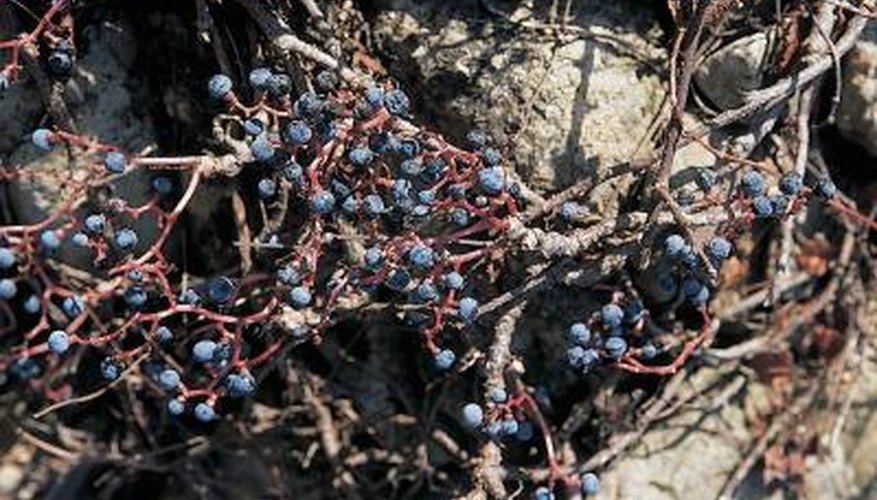Wild grape vines (Vitis riparia) look similar to other types of vines found growing in the wild, but they are far more desirable. The berries on wild grape vines are edible to humans and animals, and unlike poison ivy, the leaves won't create a skin rash when touched. Knowing how to identify wild grape vines helps gardeners distinguish between an undesirable plant and one that may be cultivated and enjoyed.
- Wild grape vines (Vitis riparia) look similar to other types of vines found growing in the wild, but they are far more desirable.
Observe the growth of the vine. Wild grape vine is a climber and will grow up to 100 feet high as long as it has a support structure.
Look at the growth pattern of the leaves. Wild grape vines have simple leaves that grow alternately on each side of the stem and are 2 to 5 inches in length. Virginia creeper, a vining plant that looks similar to wild grape, has compound leaves.
Check the leaves for long veins that spread through the leaf from the point where it joins the stalk.
Observe the edges of the leaves. The leaves of a wild grape vine should have shallow lobes and toothed, or serrated, edges.
Look for bark on the stems that may be shedding.
- Check the leaves for long veins that spread through the leaf from the point where it joins the stalk.
- Look for bark on the stems that may be shedding.
Check the flowers and/or fruits on the plant. The flowers grow in long clusters with green petals in late spring and early summer, turning into fruit beginning in the late summer to late fall. Wild grapes are smaller than commercial grapes and dark purple in colour, growing in clusters that may contain as many as 12 berries.
